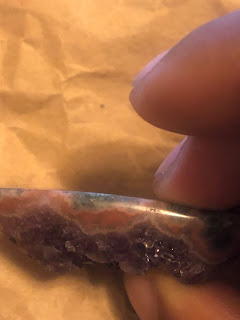“Got to plumb! Plumb the depths … the depths of hell.” (Larry David)
As a scientist, I just want to tell you how it is. It's too late to be ready. And I am going to write in the language of this world. A simultaneous preservation and expansion of possibility. I hid up in a tree, not noticing the fire ants. Adding variety and complexity; retarding society’s decay. Black coffee. Resisting being addled, repelling accelerando. Cage-free. Waiting out the search party on a bench. Inspiration from nature is clutch but responses vary. Some blame men, but who is a man? What is a man’s gender, or perhaps his sex? Nature as reference. Aryan children running through managed forest while Eric Dolphy practices intervalic leaps with backyard birds, later taught to Coltrane at the Village Vanguard. The thing we call nature is an unreliable narrator. My grandfather, a certified Master Gardener with no taste for the unruly. Supposed nematodes. Select a framework while everything is happening now everywhere. But again we see the weakness of executive action. Never been so sure of anything. Think backward to see what might arise from what has already been done. You see one redwood, you’ve seen ‘em all — in a Buddhist sense, at least.
Human Nature is metal. Think backward. Before we jump to the future, let’s attend to the past, which is still our present. In the 1960s, a group of people could be labeled variously depending on the point one wishes to make: counterculture freaks, iconoclasts, techno-utopians, mostly white men. Meanwhile, in our society we face not only persecution of people with diverse expressions of gender and sexuality, but also the prospect of doing permanent harm to the integrity of the gene pool of our species, thereby damaging our species for posterity. Towards the end of Twin Peaks, a character acknowledges living in a dream, “but,” they ask, “who is the dreamer?” Language is a word that points to an activity. I am in the air, spewing problems. Floods and droughts, too much heat unless there’s too much cold. If we’re not aliens, how come we’re never quite comfortable? Hillary reformulated the rhyme about killing Mohammad Gaddafi for nationalizing his country’s oil. Come as you are. Behold, I stand at the door and knock. If anyone hears my voice and opens the door, I will come in to him and eat with him, and he with me. Why not allow poetry to provide refuge for those neglected by the system?
Begin to gather around a set of material ideas. To see what cannot be seen due to its felt familiarity requires a forced estrangement. Certain languages were deemed excessively colonial or silly and subsequently banned. Palm trees do not mitigate climate change and shall not be planted any longer. Not that I am innocent, with my organized desire for vengeance. I am reading to you now, writing these words now, reading to you now, you, the consequence and target of my current now, which is my current now. From an interview with an anonymous CIA covert operative, I learned of an alleged case involving the military dropping disease-infected ticks over Cuba in the sixties to infect sugarcane workers. The female becomes even bigger than the male after transforming. The researchers acknowledge that the complex science of tipping points means great uncertainty remains.
To discourage venery, closing the bedroom door on the television set. “I am retreating into silence as a defensive mode,” he mentioned. More than that: they ceased to exist. If we abandon or indulge our bodies, sickness comes, and attachment to it increases. There are Muses for the several sorts of writing, but none for any kind of reading. Failures come when the recursive form cannot generate its consistency.
What difference does any of this make if we can’t communicate it to the people who matter? Manifestos derive their authority from the religious missive. The pathetic mess of vocab-morality as politics-replacement The fasten seat belt sign is still, and will for now on always be, illuminated. Where the keys were left at the top of the hill. Losing the key at the moment you go to find it or worry it’s lost – is itself the key. What kind of arrangements of truths fit the varied encounters of daily life? In which stage of the brain should we store them? Francisco Varela investigated his own subjectivity while dying of liver cancer. So what is to be gathered, hunted? It is often the case that crises strengthen a system in doubt. The smell of fruit drawer rot. To carry on in the face of all this is ridiculous. There is nothing more terrifying than stupidity. Sympathy beyond the confines of man, that is humanity to the lower animals, seems to be one of the latest moral acquisitions.
I do hope we are wrong, but as scientists we have a responsibility to explore whether this is real. Do not fear what you are about to suffer.
I am not injured by what is necessary; amor fati is my innermost nature.


























































